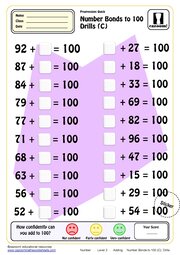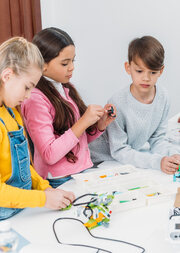Best and Safe Sources to Get My Kids Interested in Maths
This is a question that parents who are particularly concerned about what their children see and hear frequently ask. Even so, a lot of experts recommend using online educational resources as a safe way to engage any child in maths.
But what about the negative effects of things kids see online that can have a negative impact on their behaviour, associations, and character?
Parents can guide their children to age-appropriate educational resources that make learning fun and fascinating. This article will focus on the fact that the internet contains some of the best and safest maths resources, including math worksheets.
Online Resources to Get My Kids Interested in Maths
This section explains reasons why the internet contains the best resources for piquing children’s interest in maths. Let’s look at them now.
A reliable information source
Trustworthy maths websites for children have a wealth of reliable information about all kids’ maths topics. Mathematicians have reviewed and edited this information to ensure its accuracy and precision. Furthermore, the majority of articles, games, practice problems, and other content was created by maths professors and experts.
Students can be sure they will improve their skills when they use maths content from a reliable source. This in turn nurtures their interest in maths and encourages them to learn more.
Access to a variety of teaching methods
Kids have access to and exposure to various learning methodologies thanks to the availability of various teaching and resources on trustworthy maths websites. As a result, they can find educational material that explains mathematics in a way that they can easily understand.
Essential foundational concepts can be fully learned rather than just memorizing results without full understanding.
Best individual instruction
Some children can benefit from a little extra help from a tutor outside of a busy classroom setting. While not possible in school, using the internet makes it possible. All you need to do is provide your child with a laptop or a tablet and sign them up for personalized online tutoring sessions.
Some trustworthy websites devoted to maths also offer subscriptions to helpful learning resources like maths worksheets.
Keeping Your Children Safe Online While They Are Learning
While there are many safe, trustworthy, and reliable websites to develop a child’s interest in mathematics, parents understandably have concerns about content on the internet that is not age appropriate for their children. For this reason, there are several ways to protect your children.
- Registering with a legitimate maths website: Subscribing to a legitimate website for kids is one way to access a safe and reliable resource for maths education. You can be sure that your child will have a constructive experience with online learning.
- Installing a content filter on the device your child uses: There are a wide variety of content filters available today. Installing a well-rated solution will ensure that your child does not navigate away from the educational resources you intend for them to use.
Conclusion
Parents can encourage their children to enjoy maths by subscribing to trustworthy and reliable websites. Nurturing a child’s maths education can have a positive impact for a lifetime.
How Homeschooling Parents Can Tackle Common Middle-School Math Challenges








